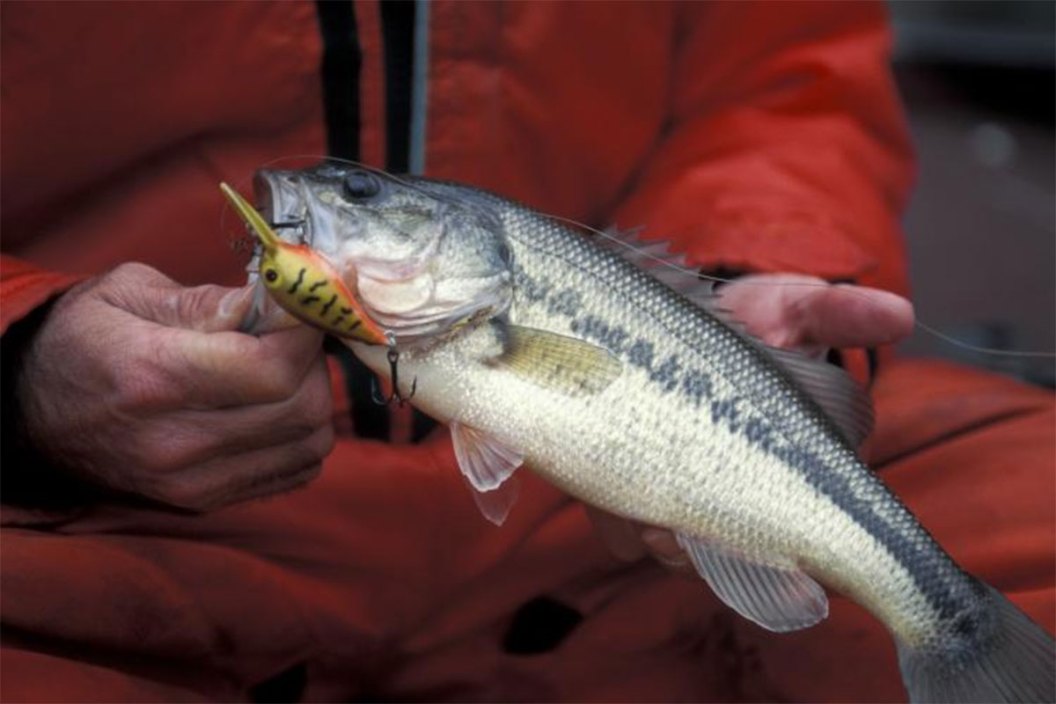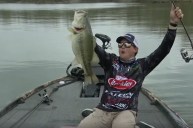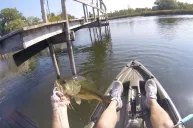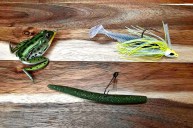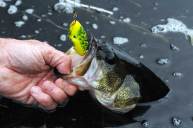We've got the scoop on identifying and fishing for the venerable spotted bass.
The spotted bass is a popular, yet sometimes slightly misunderstood species of American game fish.
According to the U.S. Geological Survey (USGS), the spotted bass is native to the "Mississippi River basin from southern Ohio and West Virginia to southeastern Kansas, and south to the Gulf; Gulf Slope drainages from the Chattahoochee River, Georgia (where possibly introduced), and to the Guadalupe River in Texas."
One of the black bass species, spotted bass (Micropterus punctulatus) are also known as the Kentucky spotted bass, the spotty, and even the Alabama spotted bass depending on the location, but most anglers know that they are different from the more commonly known largemouth bass.
Spotted Bass vs. Largemouth Bass
Spotted bass are a freshwater fish similar to the largemouth bass, but unlike the largemouth, spots have scales on the base of the back dorsal fin, and both dorsal fins are clearly connected. One of the biggest distinctions of the largemouth bass is that its jaw extends beyond its eye while the upper jaw of the spotted bass does not.
The cheek scales on the spotted bass are smaller compared to the largemouth, but that's not all. Largemouth bass have a lateral line, but it isn't nearly as pronounced as the line on the spotted bass, which looks similar to a picture of a sound wave.
Spotted bass also have dark spots on their bellies and lower sides that the largemouth lacks. Even at that, it is still a bit difficult to distinguish one from the other at times due to their similarities. Spotted bass also have a rough rectangular patch in the center of their tongue while largemouths have a smooth tongue.
This may be more difficult to spot, but it is definitely there.
View this post on Instagram
The coloration of a spotted bass and its lateral line can vary depending on time of year, location, and water quality.
Largemouths live quite a bit longer than a spot, roughly around 10-15 years, whereas the spotted bass lives only about five years. Largemouth also tend to be more solitary creatures while the spotted bass can be found in schools at times.
Spotted bass are more like smallmouth bass in that they prefer more clear water and can even be found as deep as 30 feet, while largemouth are usually found in shallower waters. Spots are even more active in the winter when the water temperature drops, a time when the largemouth all but disappears.
Spotted Bass Fishing
View this post on Instagram
As a game fish, young spotted bass have an affinity for aquatic insects, but soon they turn their attention to the things that make a bass special like shad and crayfish. Many of the same offerings that take both largemouth and smallmouth bass work well for spots such as crankbaits, spinnerbaits, stickbaits, and soft plastics.
Like any bass, they can be targeted before, during, and after their spawning period by using the same techniques. Since spots prefer more of a current in the water than their larger cousins, they tend to get in eddies or current breaks. This is similar to what you'd find in river smallmouth fishing, where the fish use those current breaks as ambush points to attack their prey before it knows what hit it.
Finesse baits like the shaky head worm are a go-to bait for spots that are on the prowl, but football head jigs and Carolina rigs work well also. Maybe the best part is that spots will aggressively hit topwater offerings as well.
More Thoughts on the Spotted Bass
From North Carolina and Tennessee to the Florida panhandle, this member of the sunfish family has been bending rods and putting smiles on the faces of anglers since it was first discovered or introduced in states around the country. Regions with native populations statewide typically have excellent fisheries that are second only to the largemouth bass in popularity.
Anglers need no specialized gear and can count on any bass fishing tackle that they already have to fish for these fun and active fish. They can be fished from the shore or from a boat and enjoyed by the simplest weekend fisherman or all of the bass pros that we know and love.
When you're ready to go after this subspecies, here's hoping you've learned a thing or two about the spotted bass.
For fishing gear and more, check out Cabelas.com.
Looking for a little more or even hot lunch for your hunting blind? Follow my webpage, or on Facebook and YouTube.
NEXT: RAY SCOTT: THE 'GODFATHER' OF MODERN BASS FISHING
WATCH
